As the field of UX design continues to evolve, the demand for skilled UX designers is on the rise. If you're preparing for a UX design interview in 2023, it's essential to check the most popular interview questions. In this article, we will dive into the world of UX design interviews and highlight some common questions you may encounter in 2023.
What is the UX interview process?
A UX interview is a process through which a candidate is assessed for their skills, experience, and fit for a UX role. UX interviews typically evaluate a candidate's understanding of UX principles, methodologies, and ability to design user-centric products. The exact process may vary depending on the company and role, but here is a general overview of what you can expect in a typical UX interview process:
Initial screening
Screening is a short interview conducted over the phone or via video call. It usually lasts 10 minutes during which the hiring manager asks a candidate questions about their background, experience, and interest in the UX field. Initial screening aims to learn about a candidate and evaluate their communication skills.
Portfolio review
If your initial screening is successful, you may be asked to review your portfolio. Your portfolio should showcase your UX skills and include examples of your work in a format of case studies. A candidate is usually expected to present one of the projects from their portfolio to hiring managers.
UX skills assessment
Sometimes, a candidate may be asked to complete an exercise to demonstrate their UX skills. This could be a design task (i.e., creating a mockup or wireframe) or a problem-solving exercise related to UX. During this step, hiring managers to evaluate how well a candidate works with a particular UX design tool and how well they can communicate their design decision.
Technical interview
Depending on the specific UX role you're applying for, you may be asked technical questions related to the position. For example, if a company hires a UX generalist with expertise in finance, they might want to learn about the methodologies that the person used in their previous position.
Interview with stakeholders
This is typically the last step in the interview process. During this step, a candidate will interact with design managers or owners of the company. Management wants to learn about the candidate and assess their soft skills and their fit for the company culture. Candidates may be asked about their past experiences, approach to problem-solving, ability to work in a team, and communication skills. A candidate should be prepared to provide examples of how they have approached UX challenges in their previous work.
How do I prepare for a UX design interview?
Here are some tips on how to prepare for a UX design interview:
Research the company and the role
The secret of a successful interview is clearly understanding the UX design requirements and expectations for the specific position you're applying for. It's relatively easy to achieve this goal when familiarizing yourself with the company's products and target audience. By doing that, you will understand the company's challenges, and it will be much easier for you to convince the hiring managers that you're the right candidate for their company. Read the job description, browse the company's website, and search for other relevant materials on the web to gain a comprehensive understanding of the company's design philosophy, culture, and values.
Update your portfolio
Outdated portfolio reduces your chances of getting the job. Ensure that your portfolio is up-to-date and showcases your best UX design work. Be ready to discuss your projects during the interview and provide details about your design decisions, problem-solving approach, and results achieved.
Familiarize yourself with popular UX design and prototyping tools, and be prepared to demonstrate your proficiency in using your favorite tools during the interview.
Research industry trends
The design landscape changes rapidly, and you need to convince hiring staff that you're staying updated on current trends and emerging technologies in the field. Learn about the latest trends and be prepared to discuss how you would incorporate them into your future designs.
Practice, practice, practice
Practice your interview skills by answering all possible questions about your experience. Pay attention to your communication skills, body language, and overall presentation.
15 common UX design interview questions and answers
1. What is your design process?
Although it's a general question, hiring managers can learn a lot about your professional experience. When asked about your design process during a UX design interview, it's essential to provide a clear answer highlighting your approach to creating user-centered designs. Here's an example of a potential answer: "My design process typically follows a human-centered design approach that involves several key steps:
Research: I start by conducting thorough research to understand the needs, behaviors, and preferences of the target users. I use techniques like user interviews, surveys, usability testing, and competitive analysis to gather insights that inform my design decisions.
Define: Once I have a solid understanding of the target users, I define the problem statement, project goals, and design requirements. It helps me establish a clear direction and scope for the project.
Ideation: I then brainstorm with my team, where I generate a wide range of design concepts and solutions.
Design: After selecting the most promising concepts, I translate them into tangible designs. This includes creating sketches, wireframes, and prototypes using design tools like Mockplus RP. I focus on creating intuitive, usable, and visually appealing designs that align with the project goals and user needs.
Test: Once I have a prototype, I conduct usability testing with real users to gather feedback and validate the design. I analyze the findings and iterate on the design based on the feedback received.
Iterate: I believe in an iterative approach to design, and I continuously refine and improve the design based on feedback, testing results, and stakeholder input. I'm open to feedback and actively seek input from team members, stakeholders, and users to continuously improve the design.
Throughout the design process, I actively collaborate with team members, including product managers, developers, and other stakeholders, to ensure alignment and gather input and feedback from diverse perspectives."
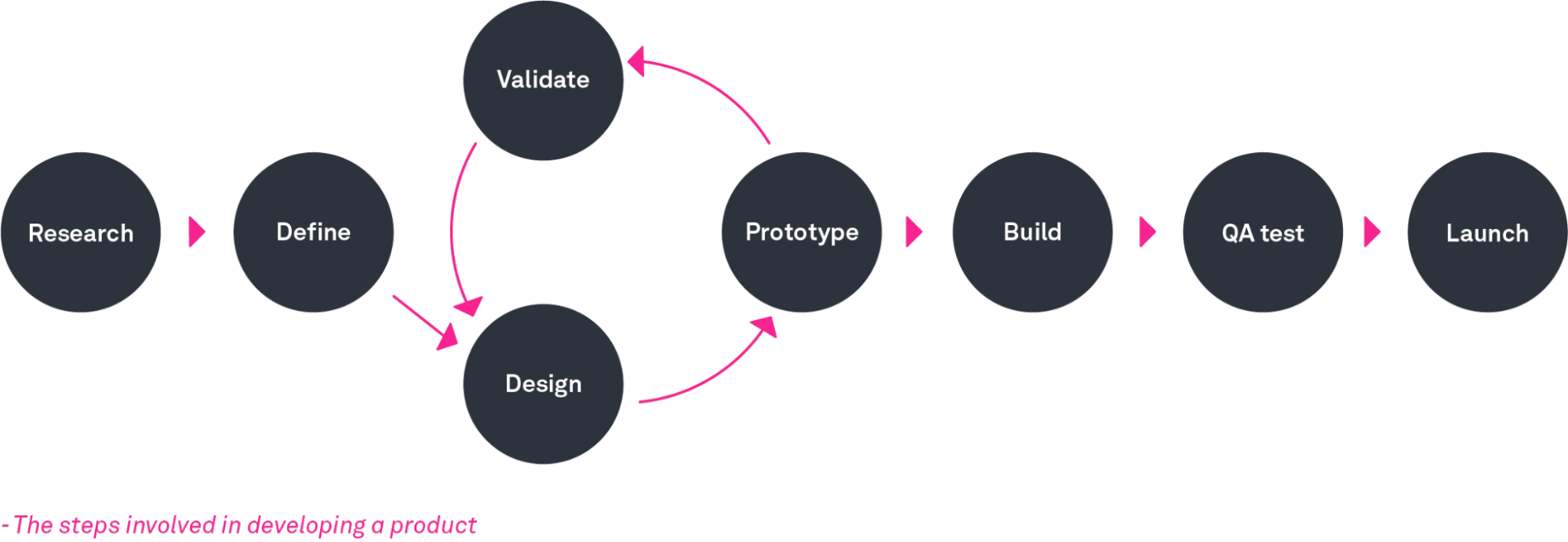
UX Design process. Image by UX Design Institute.
2. How do you prioritize user needs and business goals in your UX design projects?
Good design is about finding a sweet spot between user needs and business objectives. When asked this question, it's essential to provide a strategic approach. Here are some key points to consider in your answer:
Understanding the context: Explain how you clarify the project's objectives, goals, and constraints and gain a deep understanding of the users, their needs, and the business goals of the project.
Conducting research: Describe how user research helps you and your team to identify and prioritize user needs, pain points, and preferences. Tell hiring managers the techniques you use (such as user interviews, surveys, and usability testing).
Business goals alignment: Business goals alignment is about identifying commonalities and areas where user needs and business goals intersect. UX designers often collaborate closely with stakeholders, such as product managers and business owners, to understand their perspectives, priorities, and constraints. It also helps to define the metrics that the team will rely on when measuring the success of a design. UX practitioners summarize this information in a document called business model canvas.
Iterative approach: Emphasize the importance of an iterative approach in UX design, where you continuously gather feedback from users, stakeholders, and team members to inform design decisions and adjust priorities as needed.
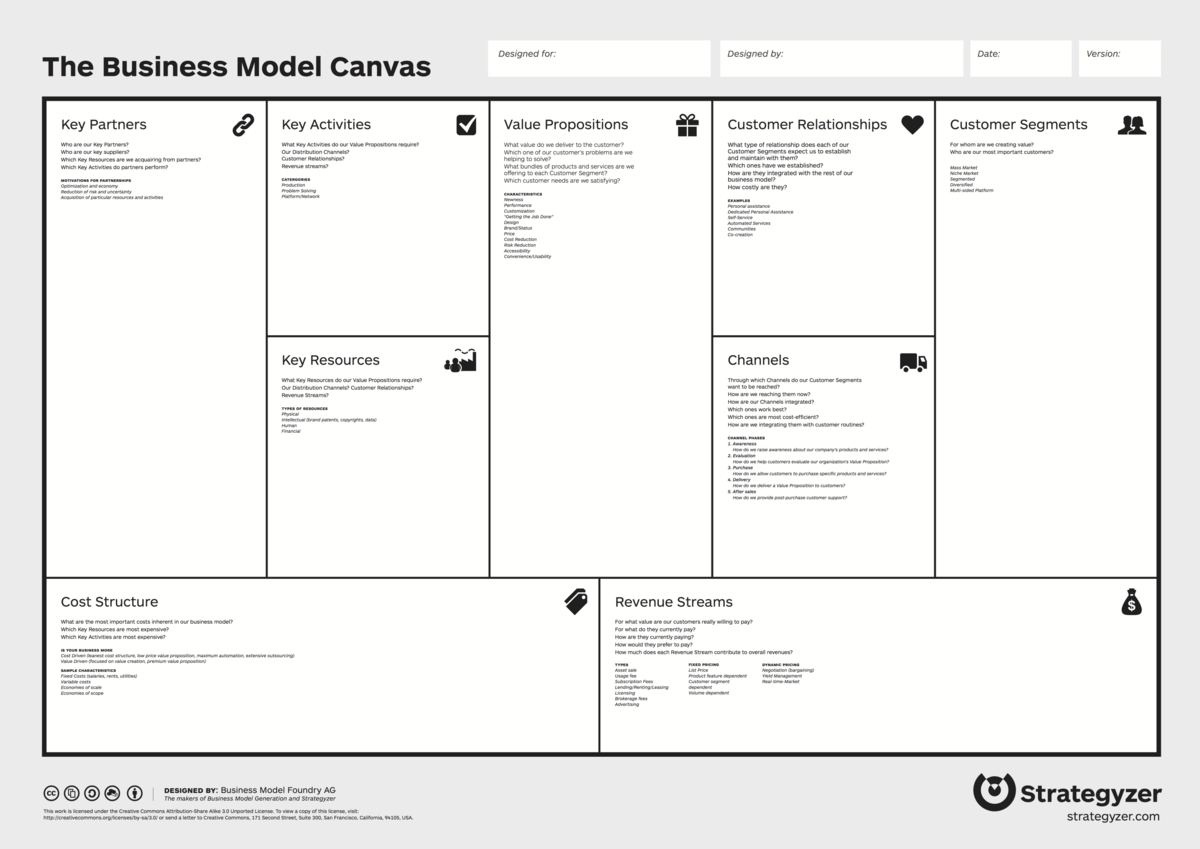
Business model canvas. Image by Strategyzer via Wikipedia.
3. How do you gather user feedback for a project?
When answering this question, it's essential to highlight your practical skills and experience in conducting effective user research and gathering valuable feedback. Here are some key points to consider in your answer:
Explain how you define the research objectives based on the project's goals and requirements.
Tell hiring managers how you choose appropriate research methods based on the project's goals and constraints (like time and budget).
If you hire test participants, tell hiring managers how you develop a plan to recruit participants who are representative of the target user group or audience for the project.
Explain how you synthesize findings. How you organize and document the findings clearly and concisely and communicate them effectively to the project team.
Finally, tell how you incorporate findings into the design. You must explain how research findings are used to inform your UX design decisions.
Information architecture is a cornerstone of product design. Without solid information architecture, it's nearly impossible to release a successful product. When answering the question, it's vital to demonstrate your understanding of information architecture principles and how you apply them in your design process. Here are some key points to consider in your answer:
Clarity and simplicity: Information architecture should be clear and simple, making it easy for users to understand and navigate the product. This can be achieved through clear labeling, logical grouping of content, and the use of familiar navigation patterns.
Consistency and predictability: Information architecture should be consistent across the design, providing predictable patterns and behaviors that users can rely on. It helps users develop mental models and makes it easier for them to learn and use the interface.
Flexibility and scalability: Information architecture should be flexible and scalable, allowing for future growth and changes. This goal can be achieved by using modular design patterns, flexible content structures, and adaptable navigation systems.
Context-awareness: Information architecture should consider the context of use, such as the device, screen size, and user context. It helps ensure that the information is presented in a way that is appropriate and usable for the specific context of use.
Accessibility: Information architecture should be designed with accessibility principles in mind, ensuring that all users, including those with disabilities, can effectively access and navigate the content.
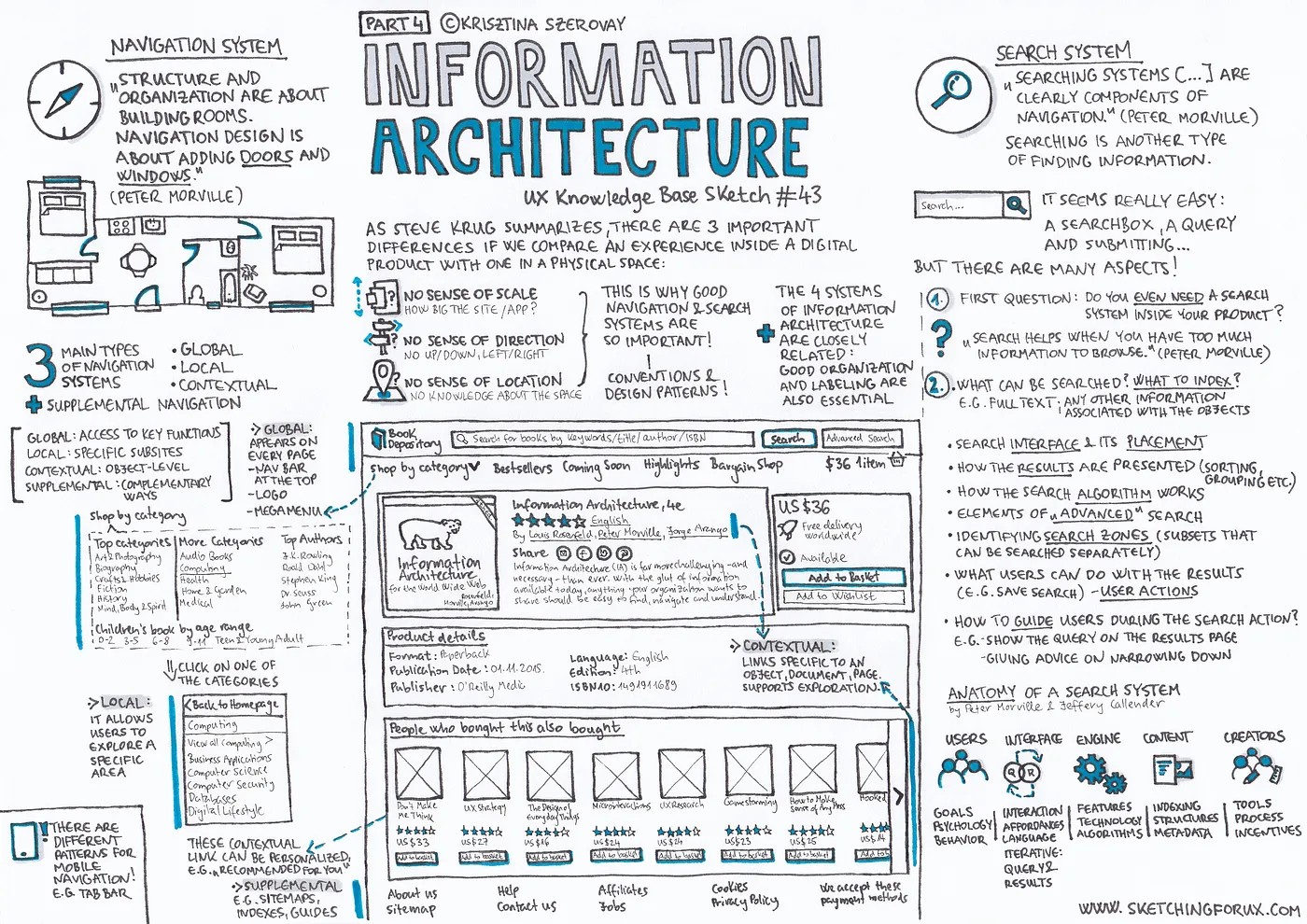
Information architecture explained. Image by Krisztina Szerovay
5. How do you ensure that your designs are usable and accessible?
Good design is a design that is accessible to all groups of users, including people with disabilities. Usability testing plays an integral role in evaluating the accessibility of your product. It's important to tell how you conduct usability testing with actual users to gather feedback and insights on your designs.
Along with usability testing, you need to follow established accessibility guidelines, such as the Web Content Accessibility Guidelines (WCAG), to ensure that your designs are accessible to users with disabilities. The design you share with your users should have proper color contrast, be keyboard-accessible, have alternative text for images, and have proper semantic markup.
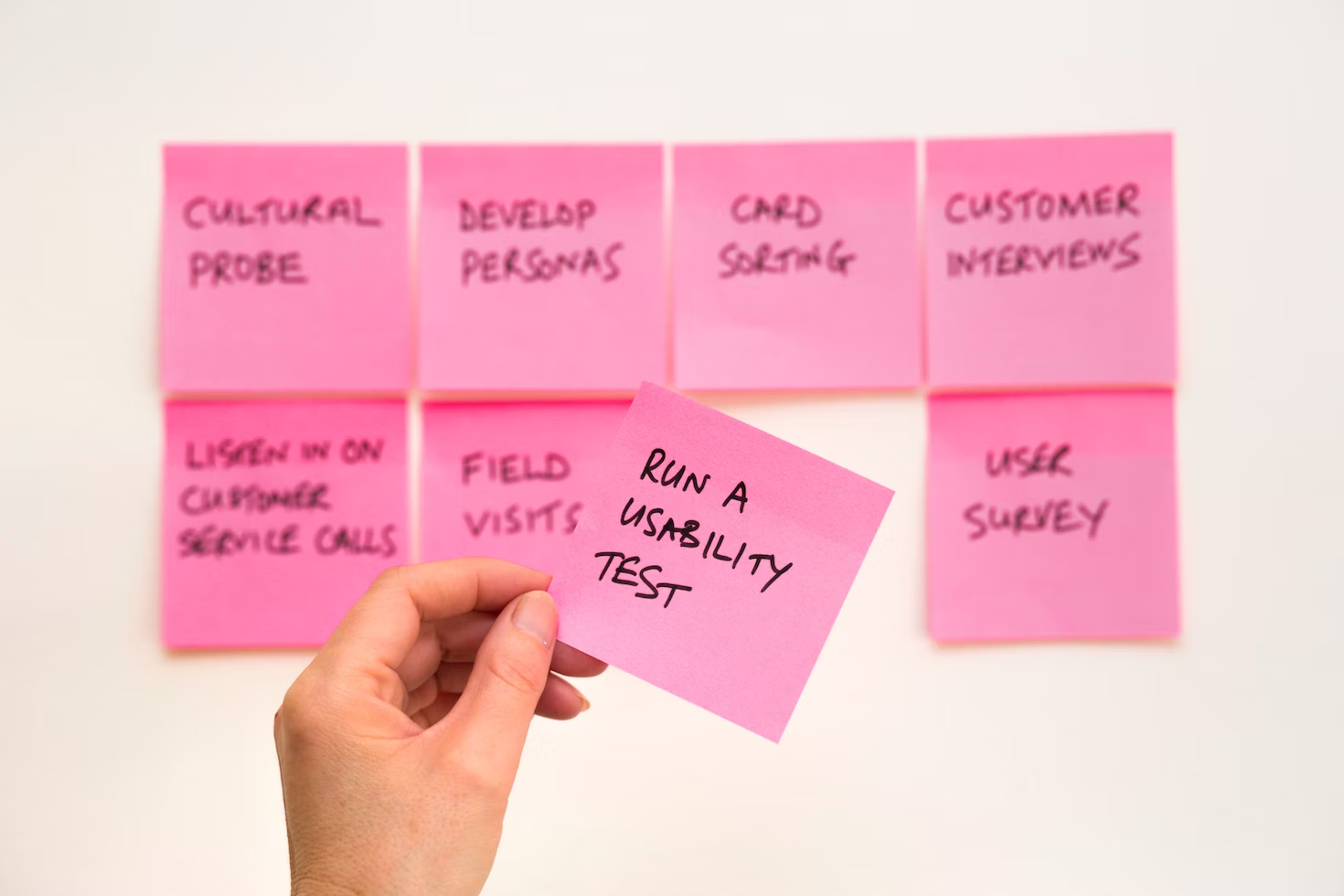
Usability testing is an integral part of the design process. Image by David Travis
6. How do you communicate your design ideas to stakeholders?
When answering this question, try to help the hiring managers understand how you do your presentations. It's recommended to discuss what visual aid you typically use—whether you design lo-fi wireframes and show them to stakeholders or you prefer to create polished prototypes to help illustrate your design ideas. It's also important to mention the storytelling techniques you use to communicate your design ideas in a compelling and relatable way. Tell hiring managers how you frame your design ideas in the context of users' needs and pain points, and explain how your design solutions address those needs and provide value.
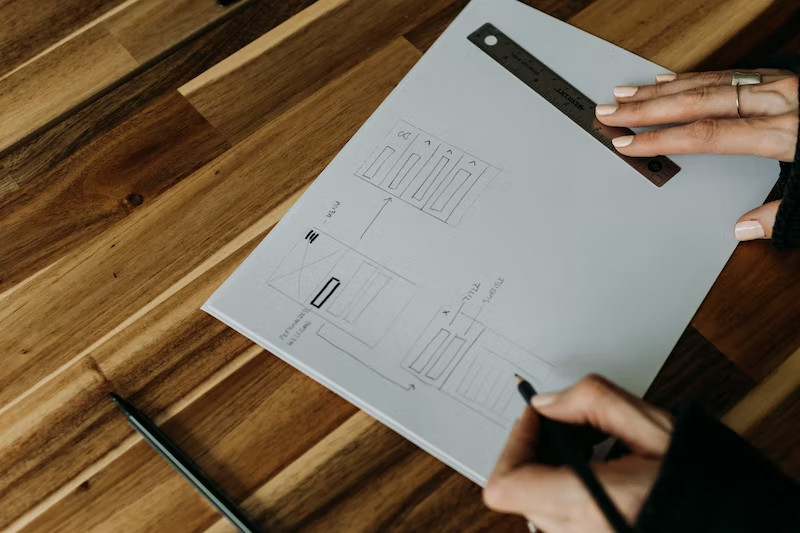
Lo-fi wireframes. Image by Kelly Sikkema
Tell me about your tools of the trade. Hiring managers might likely want to hear about prototyping tools you use (i.e., Mockplus PR) as well as collaboration tools (i.e., mind map tools like Miro, knowledge sharing tools like Notion, etc.). If you mention a particular instrument, be ready to show the work that you've created using it.
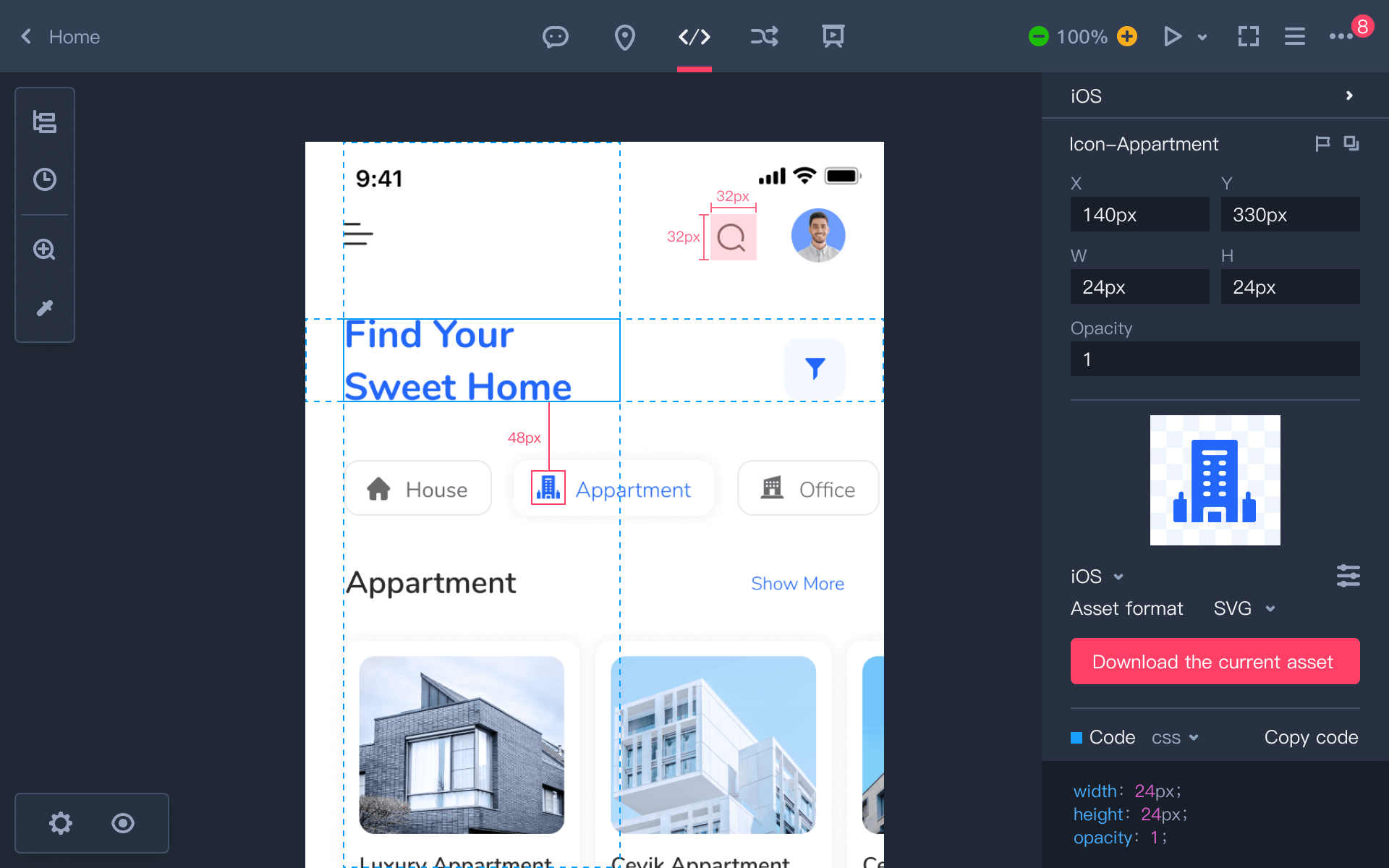
Using Mockplus to create a high-fidelity mockup of a mobile app.
8. How do you ensure consistency in designs across different screens or pages?
Good design is consistent design. When you ask this question, you must tell hiring managers how you achieve visual and functional consistency in your design. The visual and functional language you choose should be the same, no matter what part of the product the user is. When answering this question, you might want to tell how you design information architecture, choose interaction patterns, and create design systems.
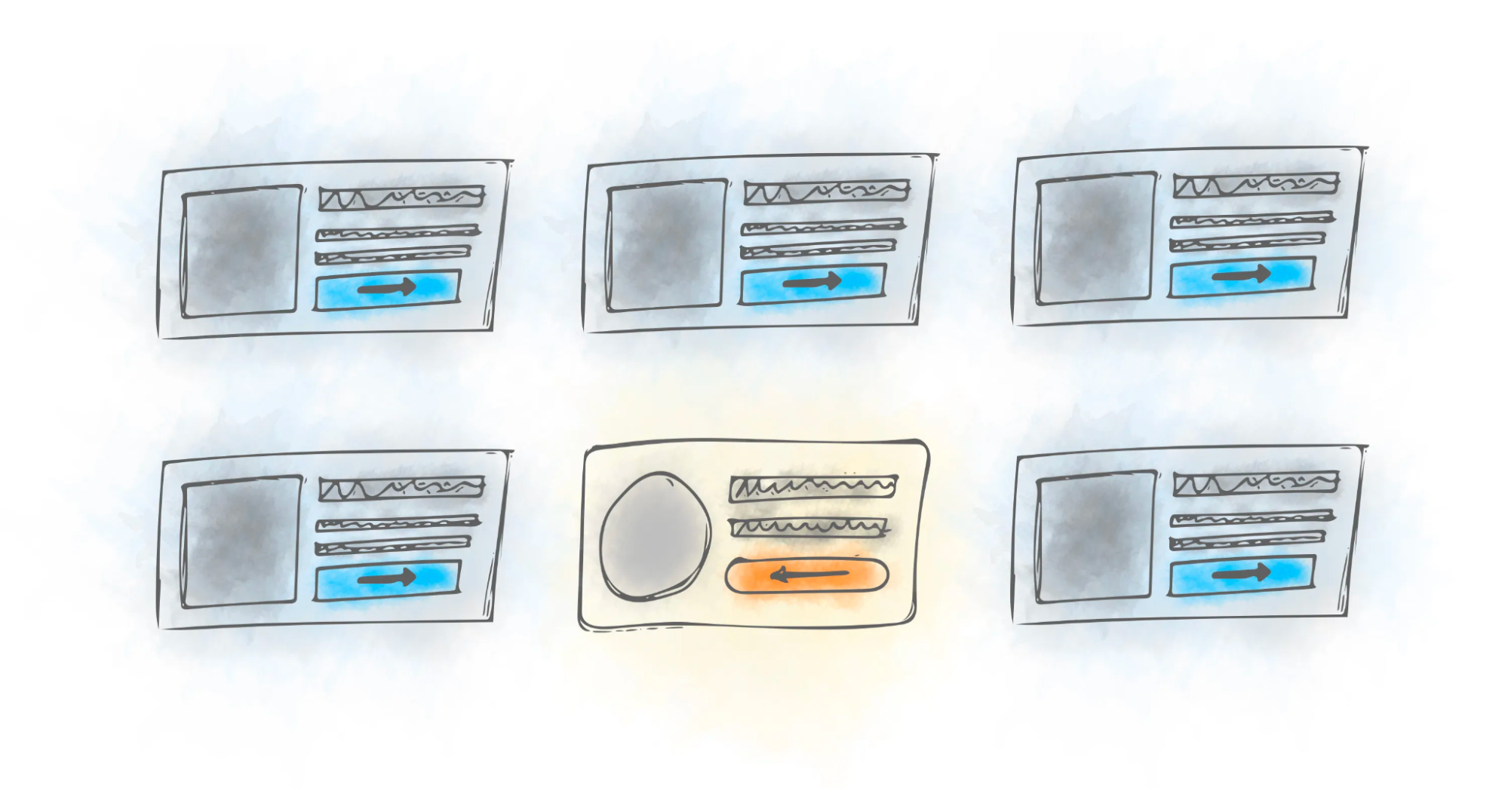
Inconsistency in design creates confusion and leads to friction. Image by Anton Nikolov.
9. Tell me about a time you failed
Honesty is the best policy. Don't pretend you never failed in your career as a UX designer. Instead, tell a story about the project that didn't go as planned and the lesson you've learned from your failure. Don't focus too much on the fact of a failure; instead, focus on the knowledge and skills you've gained.
10. How do you collaborate with other team members?
Design is a team sport. Unless you're building a product alone, you have to collaborate with other team members. How well you can work with other people can directly impact the design process's outcome. You need to tell hiring managers what practices you use when interacting with other departments and how you invite team members to design activities such as design reviews.
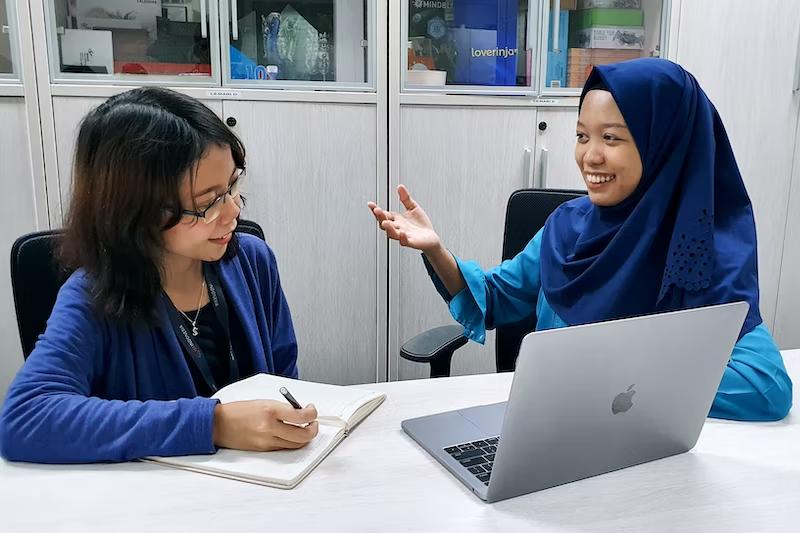
UX Interview. Image by UX Indonesia.
11. What is the most challenging UX design problem you have encountered in the past and how did you solve it?
This question will test your communication skills. Not only do you need to communicate the problem, but you also need to create a proper context so that hiring managers can fully understand your case. Here is an example of a response you can provide:
"One of the most challenging UX design problems I encountered in the past was designing a seamless checkout process for an e-commerce website. The issue was that the existing checkout process had multiple steps, and users were dropping off at various stages, leading to a high cart abandonment rate. To solve this problem, I followed a user-centered approach and took the following steps: conducted user research, identified key issues, redesigned the checkout process, conducted usability testing to ensure that the product satisfies the user needs/wants, and tracked product performance over time after the release using metrics like conversion rate and error rate."
12. How do you approach designing for different target groups?
Some products are targeted at more than one group of users. For example, a product might have a few segments of customers who use it. In that case, it's vital to conduct user research and learn the difference between segments as well as identify the primary and secondary personas. The primary persona is the one that has a significant impact on your business bottom line (i.e., its a major part of your customers or the highest paying group of customers). Most of the time, product designers focus on the needs/wants of a primary persona while also considering the secondary personas.
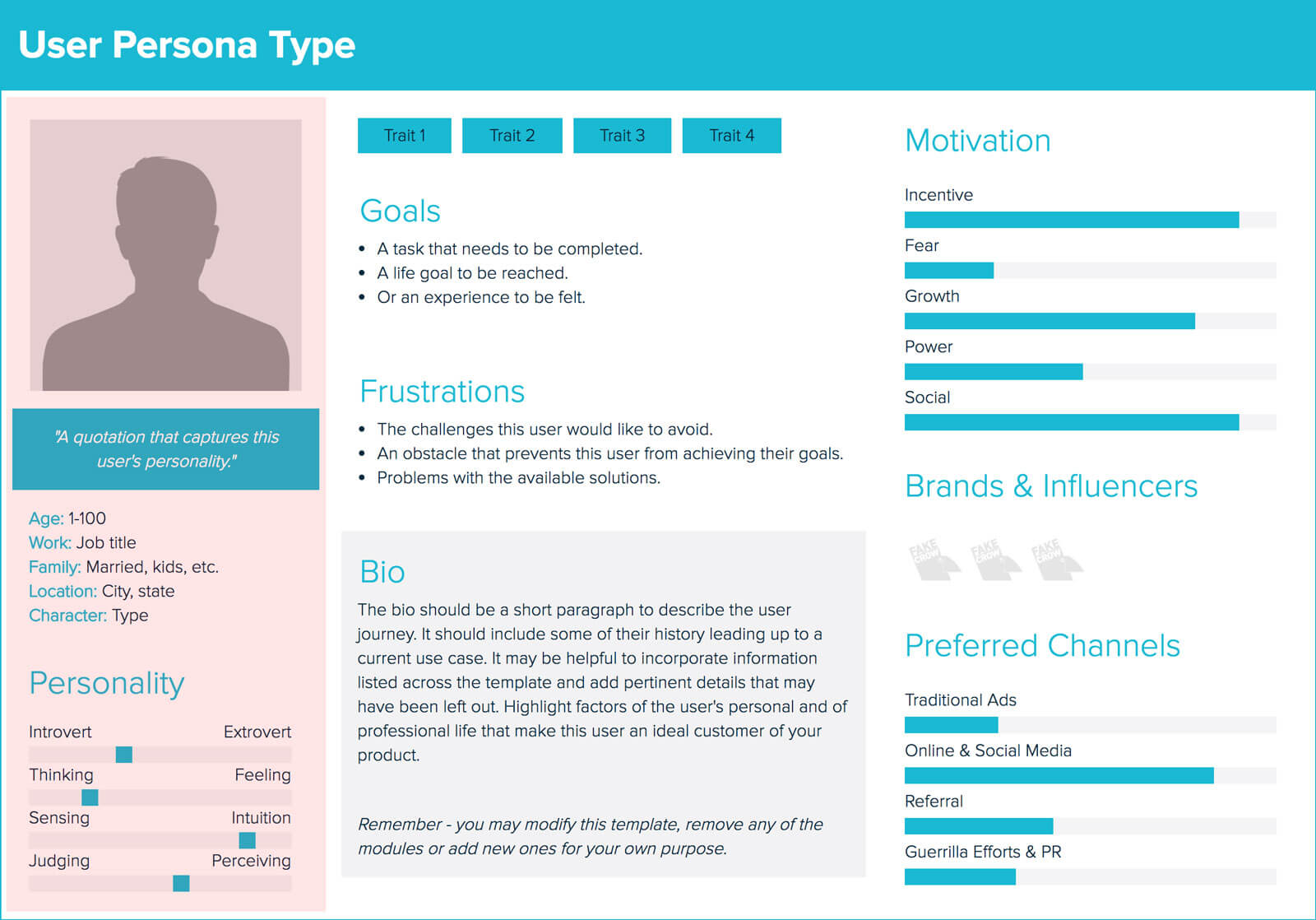
User persona template. Image by Xtensio.
13. Do you have experience building design systems?
A design system is a tool that allows designers to create a consistent and scalable design. If you don't have practical experience building design systems, you need to have a basic understanding of how design systems work. It's vital to understand a design component, style guide, and guidelines.
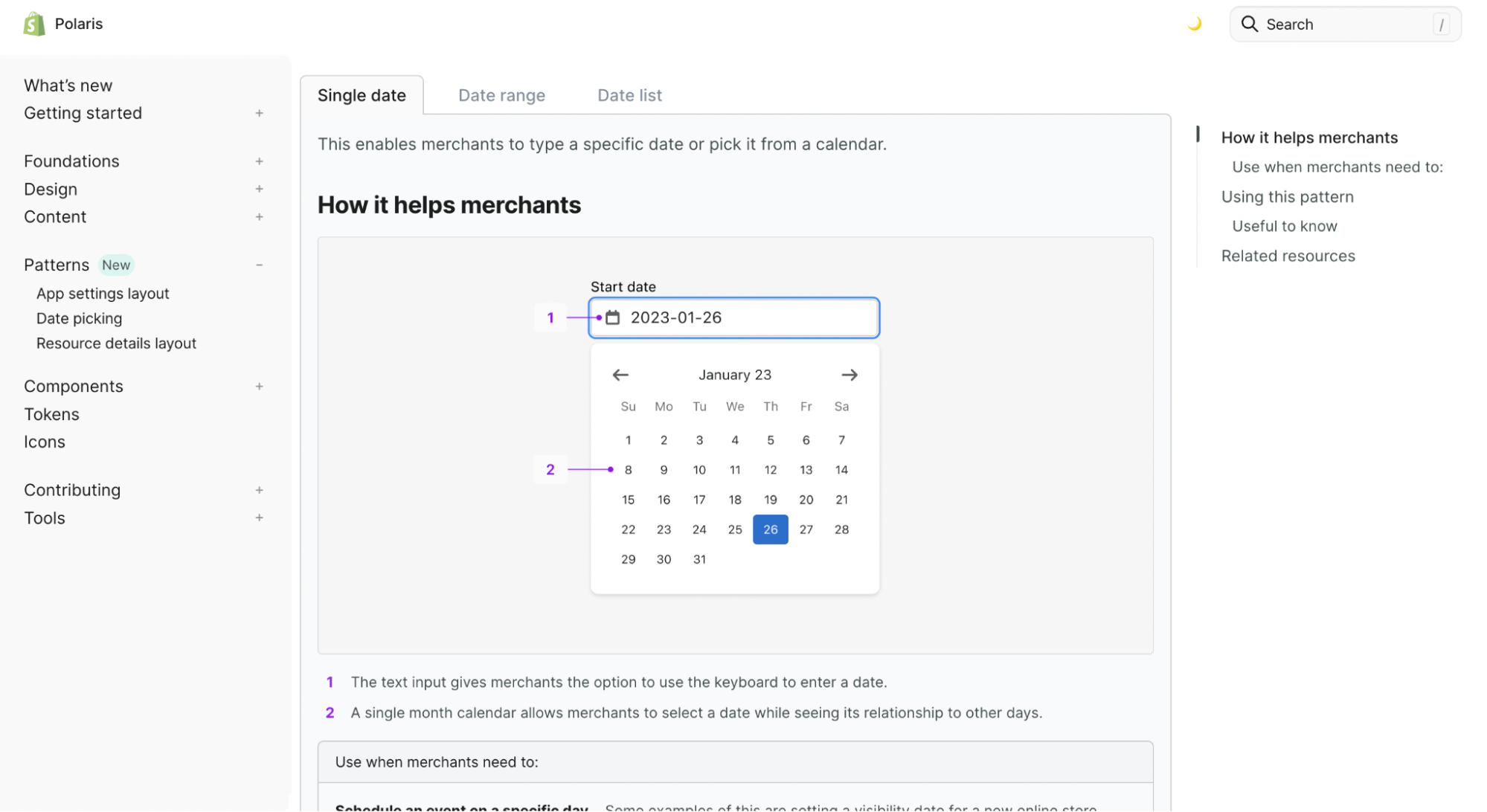
Shopify Polaris design system. Image by Shopify.
14. How do you stay updated with the latest UX design trends, best practices, and emerging technologies?
Design evolves all the time, and to be competitive in the market, you need to learn about new trends and technologies that emerge all the time. You should visit resources like Dribbble and Behance to get visual design inspiration. If you're interested in learning about technologies, you should check Vice and TechCrunch.
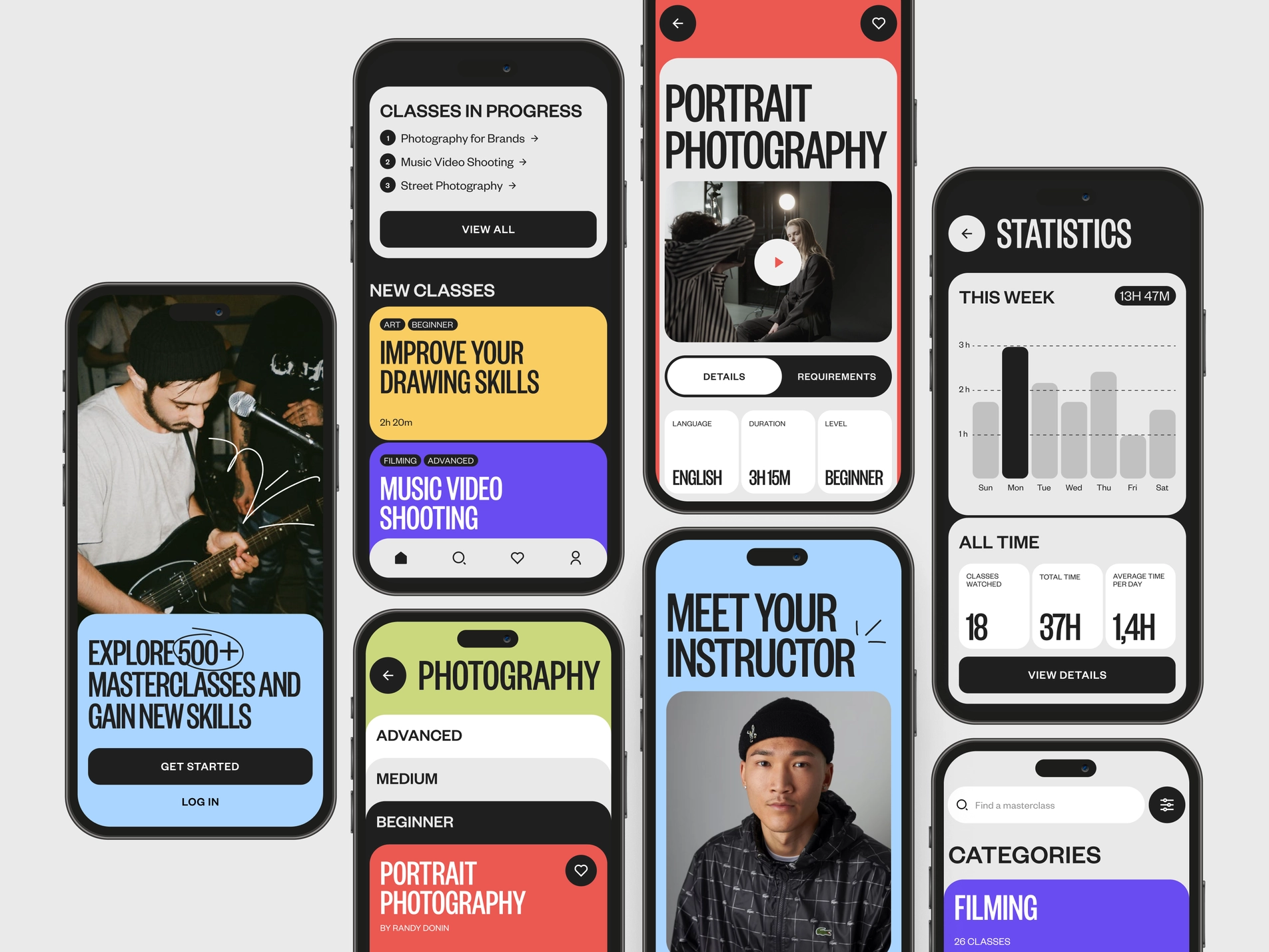
Masterclass Mobile Design. Image by tubik UX via Dribbble
15. How do you handle design constraints, such as technical limitations or budget restrictions, in your projects?
Dealing with constraints is a natural part of the design routine. You need to tell hiring managers how you evaluate the technical feasibility of a product and communicate budget requirements to stakeholders. UX practitioners often achieve this goal by working closely with the development team and stakeholders.
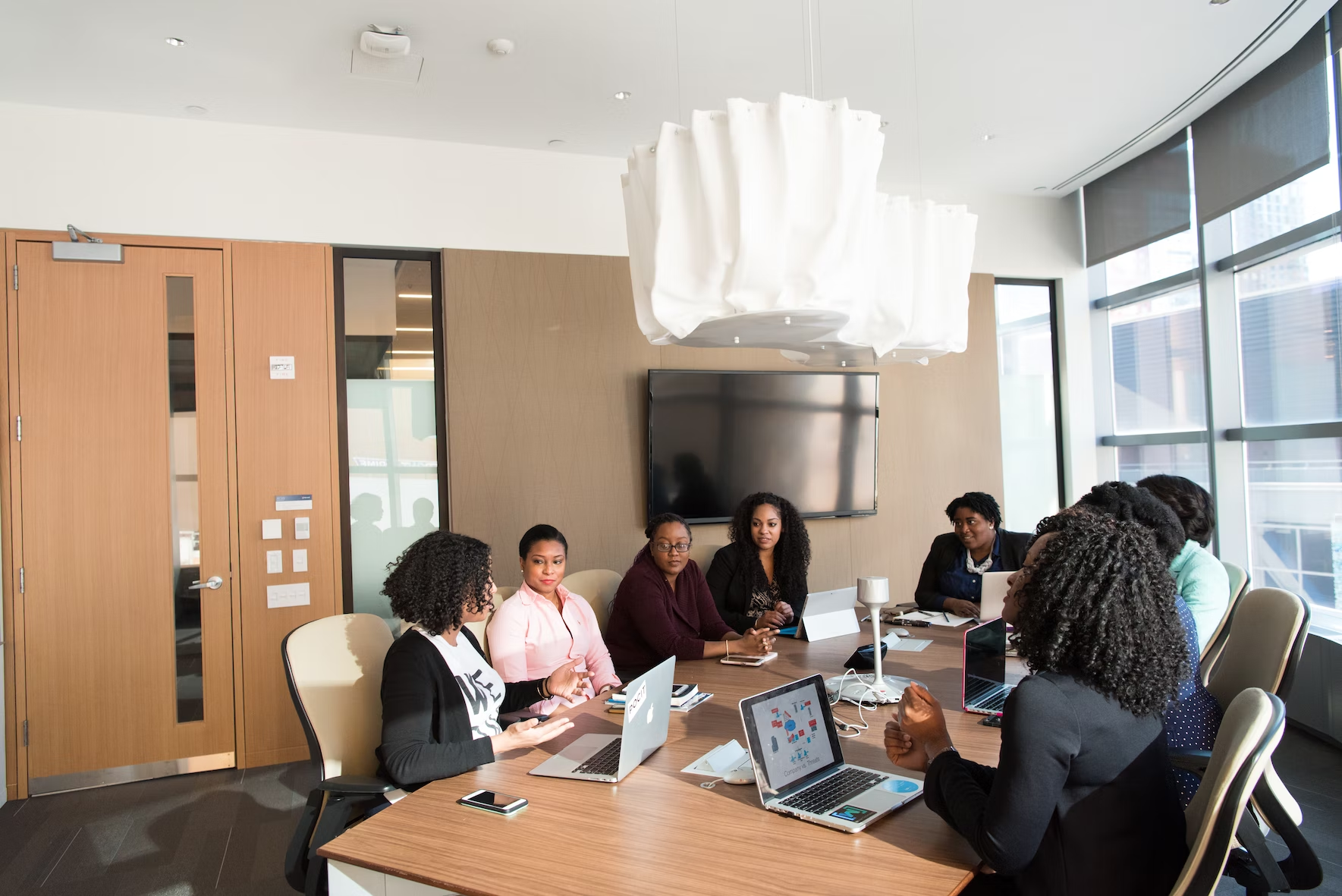
Meeting with stakeholders. Image by Christina.
What to ask at the end of a UX interview?
Asking thoughtful questions at the end of a UX interview can demonstrate your interest in the role. Here are some examples of questions you can ask:
Can you tell me more about the design team?
What are some current or upcoming UX projects that the team is working on?
Can you share more about the company's UX design process?
What are the key challenges that the UX team is currently facing?
Can you tell me more about the collaboration between the UX team and other departments, such as development, product management, and marketing?
How does the company promote professional development and growth for UX designers?
What is the typical career path for a UX designer at this company?
How do I nail a UX design interview?
Practice, practice, practice. The best way to nail a UX design interview is to practice your answers to common interview questions with friends or mentors. This will help you build confidence, refine your responses, and be better prepared for the actual interview.
Conclusion
Treat UX design interviews as one of your projects. Think about it as a challenge that you need to overcome to become better at what you do. Remember to be genuine, confident, and enthusiastic during the interview, showcase your skills, experience, and passion for UX design, and demonstrate how you can add value to the company and the UX team.
FAQ:
How do you introduce yourself in a UX interview?
Introducing yourself in a UX interview is an opportunity to make a positive impression and set the tone for the rest of the interview. Start with a brief and concise introduction that includes your name, background, and relevant experience. Mention your experience and expertise in UX design, including your education, certifications, and any relevant projects or roles you have held in the past. Share your passion for UX—express your genuine interest and passion for UX design.
How long should a UX interview take?
The duration of a UX interview can vary depending on various factors, such as the company, the role, the level of the position, and the specific interview format. Typically, a UX interview can last anywhere from 30 minutes to 1.5 hours, although it could be longer in some cases.
How many rounds of interviews for UX design?
The number of rounds of interviews for a UX design position can vary depending on the company's hiring process and the specific role. Typically, there could be anywhere from one to five rounds of interviews for a UX design position.
What do recruiters look for in a UX portfolio?
Recruiters and hiring managers typically seek strong problem-solving skills and solid visual and interaction design skills. They want to see evidence of your ability to create visually appealing and interactive user interfaces with a great user experience.


















